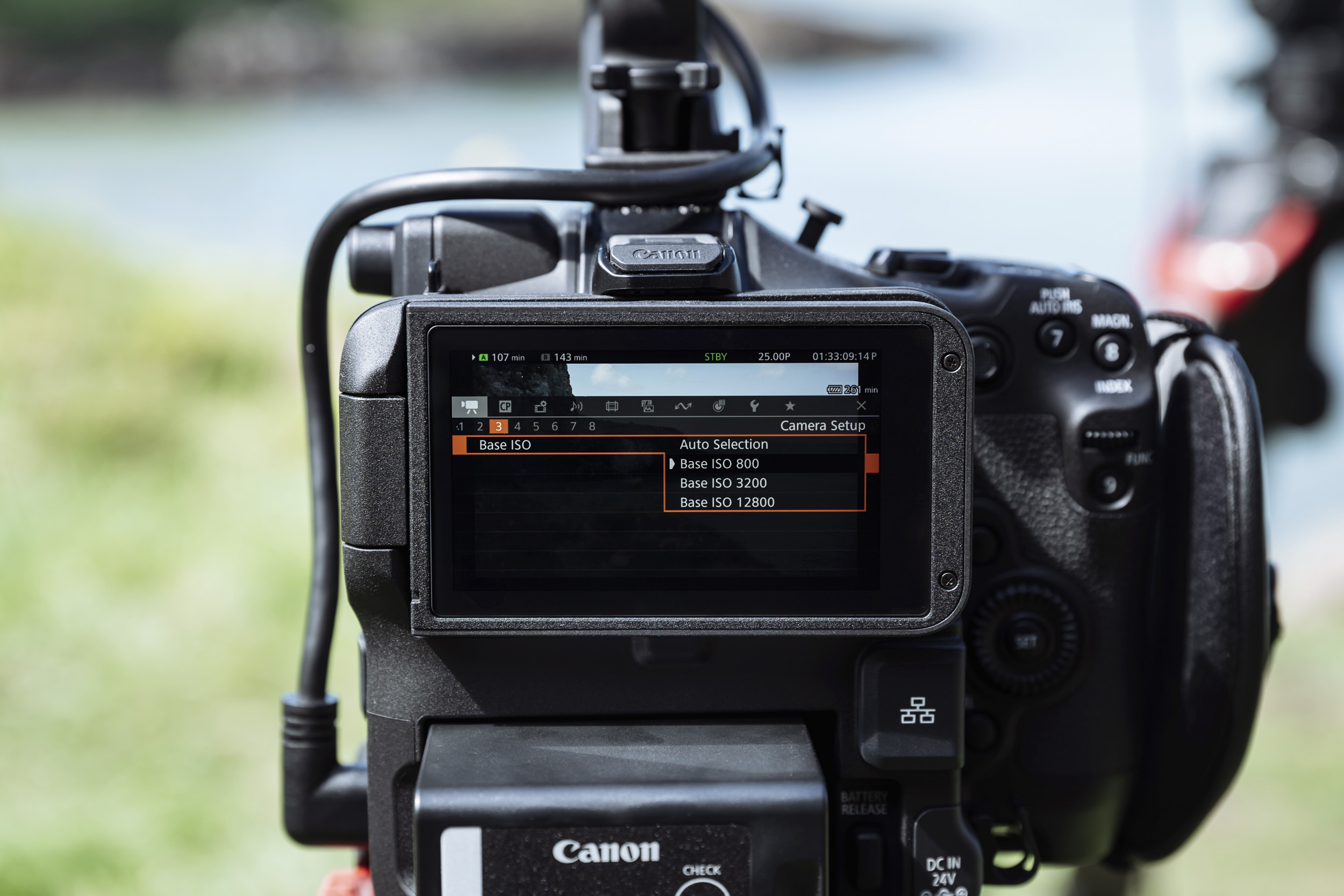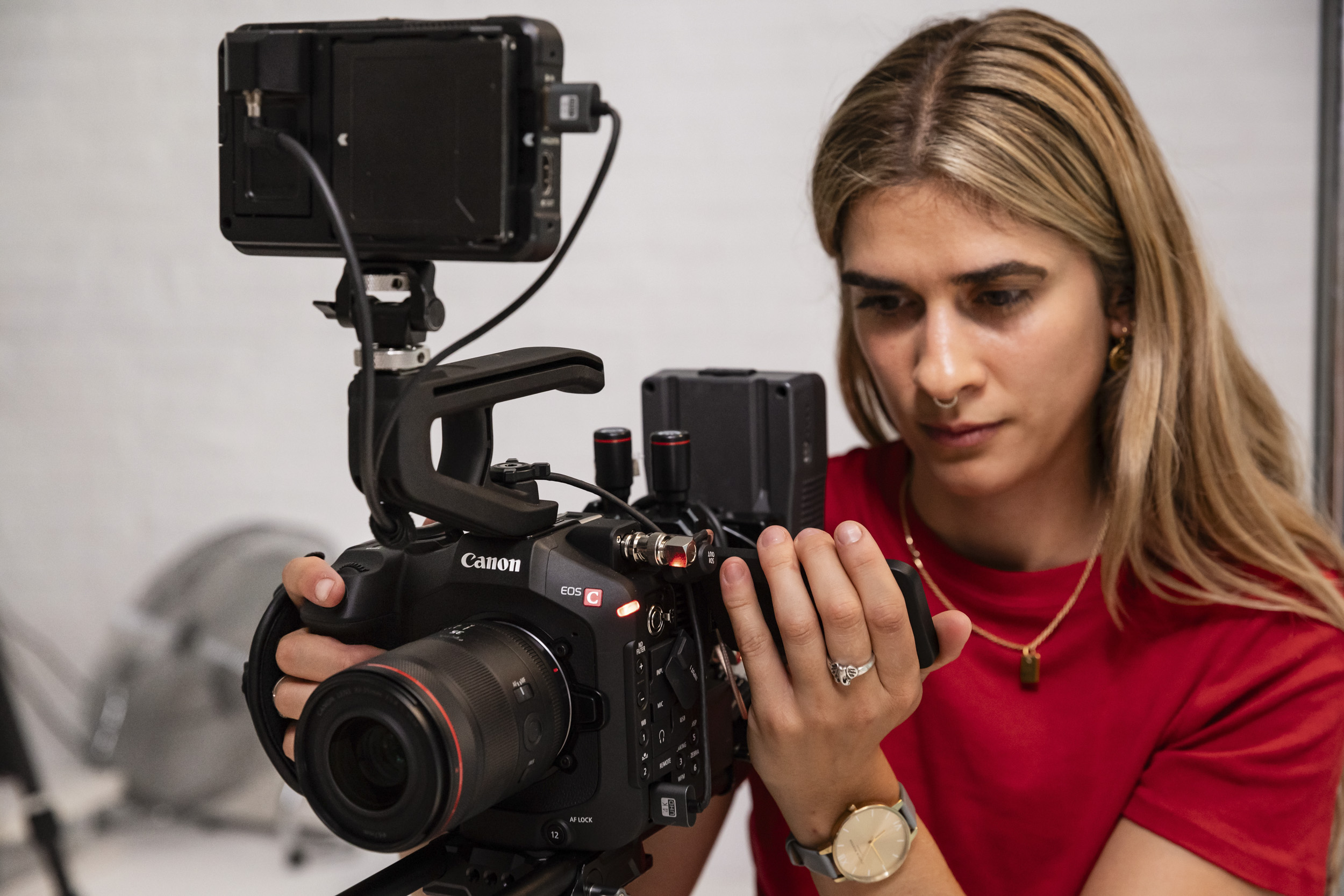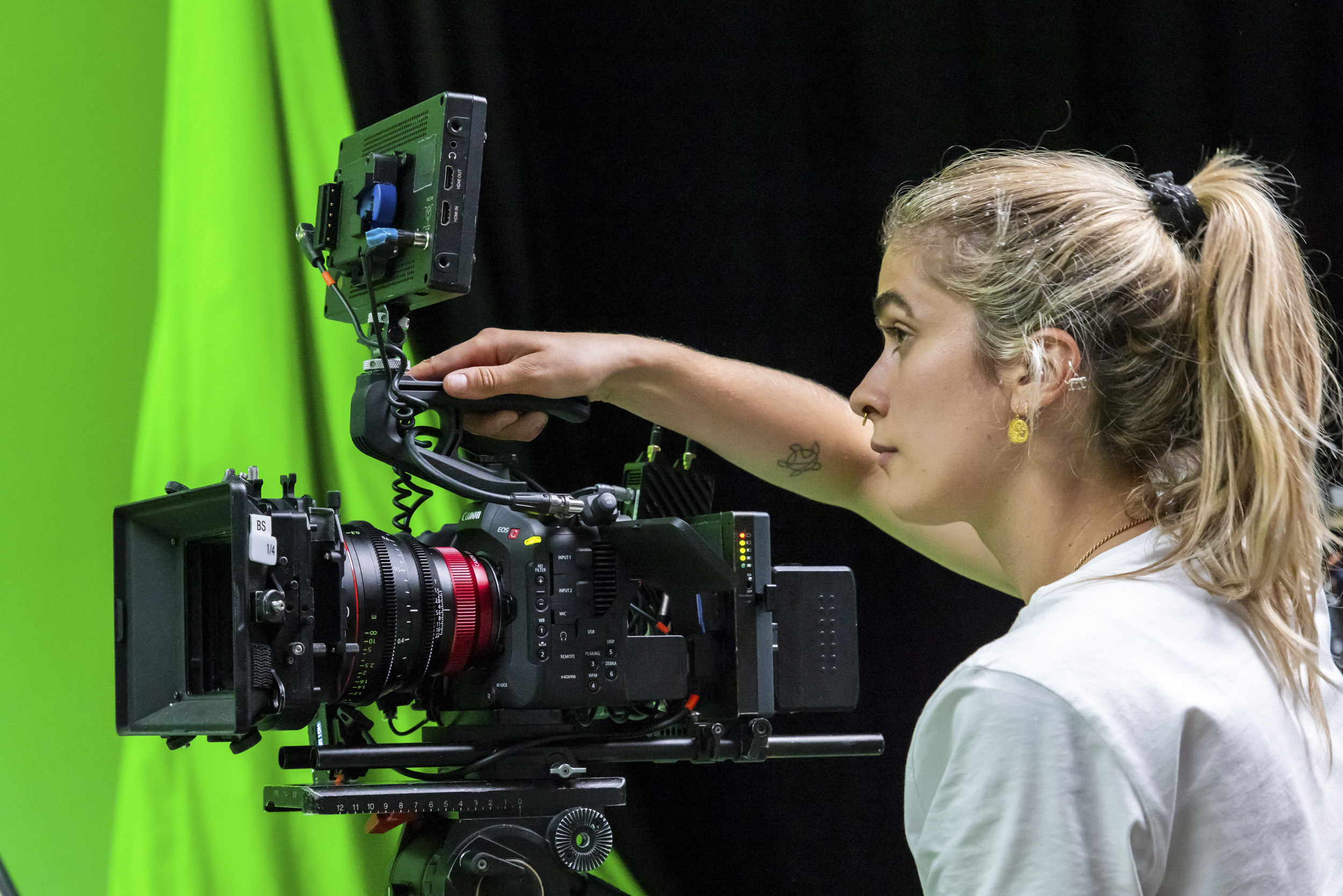The 6K Canon EOS C80 looks like its most powerful and versatile cinema camera yet for indie filmmakers
Inheriting EOS C400 tech like the world's first triple-base ISO

Canon has launched the EOS C80, a powerful follow-up to the EOS C70, its four-year-old RF-mount Super 35 4K cinema camera thats's popular with indie filmmakers.
Identical in size to the EOS C70, the new EOS C80 marks a significant upgrade, packing the same (larger) full-frame backside illuminated stacked sensor with 6K video capabilities as the recently announced EOS C400. The EOS C80 also inherits the world-first triple base ISO of the EOS C400.
Most of the leading cinema cameras, like the Blackmagic Cinema Camera 6K and Panasonic Lumix S5 II, offer a dual base ISO; two ISO settings to deliver the best possible signal-to-noise ratio, one for good light and one for low light. However, a triple base ISO is even more versatile; the EOS C80's ISO 800, ISO 3200 and ISO 12,800 settings will each give you the cleanest possible image the camera's sensor is able to produce – a true cinema camera innovation.


It may be a dedicated video camera, but the EOS C80 has the same RF-mount as Canon's photography-focused mirrorless cameras, a built-in grip and a 3.5-inch flip-out touchscreen, making it a familiar and more accessible package to those who've used a Canon mirrorless cameras, like the EOS R5 Mark II, than Canon's modular cinema cameras like the EOS C400.
The new camera's sensor, as used in the EOS C400, is capable of capturing 16 stops of dynamic range, 12-bit RAW video internally, with Canon's Cinema Raw Light color profile to keep file sizes down, and video resolution / frame rates of 6K 30fps, 4K 120fps and 2K 180fps.
Canon's dual-pixel CMOS autofocus promises reliable focusing with autofocus points covering 100% of the frame, but the 5-axis stabilization is the less effective electronic type, which means ideally you'll want some method of stabilizing the camera for handheld use.








Where the video-dedicated EOS C80 differs from Canon's video-focused hybrid cameras like the EOS R5C is through its swathe of video tools, such as built-in ND filters (2, 4, 6, 8 and 10 stops) and robust connectivity that includes 12G SDI (pro broadcasts demand secure SDI over HDMI) and mini-XLR terminals to attach accessories such as mics and monitors. It can also be adapted to Canon EF and to PL-mount lenses, complete with metadata – the latter includes legendary cine optics such as those by Cooke.
Get daily insight, inspiration and deals in your inbox
Sign up for breaking news, reviews, opinion, top tech deals, and more.
We can see the EOS C80 being Canon's most popular cinema camera with indie filmmakers especially, or as a more compact broadcast tool. It's priced at $5,499 / £5,339 / AU$8,899 for the body only, and available in November 2024 – preorders are open now in some markets.
You might also like

Tim is the Cameras editor at TechRadar. He has enjoyed more than 15 years in the photo video industry with most of those in the world of tech journalism. During his time as Deputy Technical Editor with Amateur Photographer, as a freelancer and consequently editor at Tech Radar, Tim has developed a deeply technical knowledge and practical experience with cameras, educating others through news, reviews and features. He’s also worked in video production for Studio 44 with clients including Canon, and volunteers his spare time to consult a non-profit, diverse stories team based in Nairobi. Tim is curious, a keen creative, avid footballer and runner, and moderate flat white drinker who has lived in Kenya and believes we have much to enjoy and learn from each other.